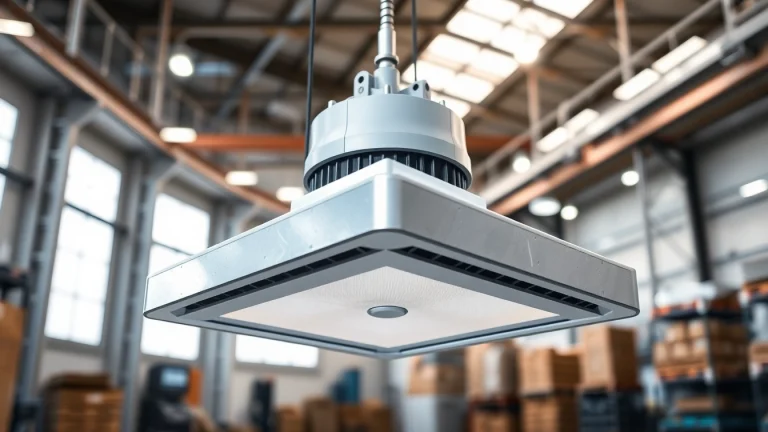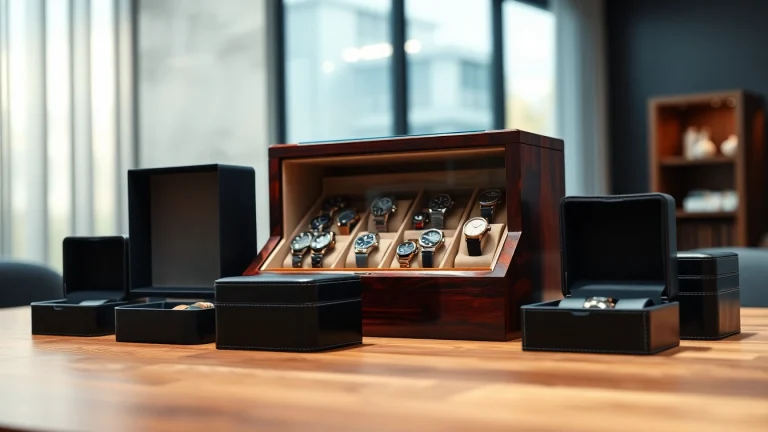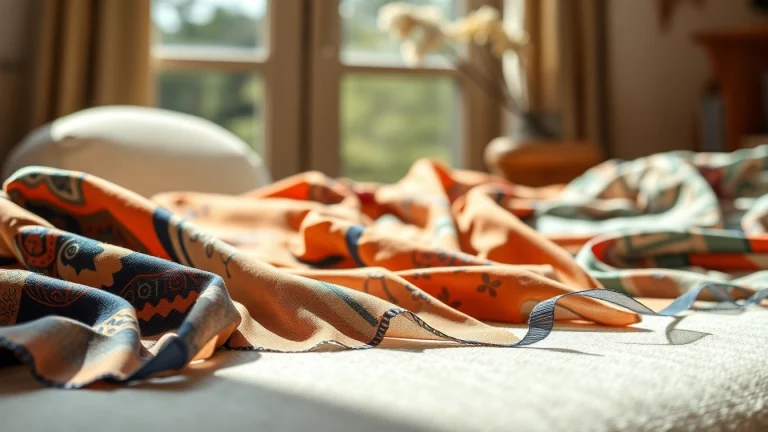
Enhancing Efficiency with Vapor Tight Fixture for Harsh Environments
Understanding the Importance of Vapor Tight Fixture
Definition and Key Features
The Vapor Tight Fixture is a specialized lighting solution designed to operate in harsh environments where moisture, dust, and contaminants are prevalent. Characterized by robust construction and high-level sealing, these fixtures ensure reliable performance and longevity even under challenging conditions. They are typically equipped with polycarbonate or glass lenses, gasketed seals, and corrosion-resistant materials, which protect the internal components from elements that can cause damage or failure.
Among the standout features of vapor tight fixtures are their IP ratings, usually ranging from IP65 to IP68, indicating their resistance to dust ingress and water immersion. This makes them suitable for outdoor installations, industrial settings like manufacturing plants, parking garages, and refrigerated areas. Moreover, they often employ LED technology, offering further benefits in energy efficiency and lifespan compared to traditional light sources.
Applications in Various Industries
Vapor tight fixtures are utilized across a wide array of industries, thanks to their durability and reliability. In the industrial sector, warehouses and production facilities often experience high levels of dust and moisture, necessitating lighting solutions that can withstand these conditions. Vapor tight fixtures are perfect for such environments, providing consistent illumination while reducing maintenance costs associated with frequent fixture replacements.
In the agricultural sector, vapor tight fixtures are commonly installed in greenhouses to provide plants with the necessary light while resisting humidity and condensation. Similarly, in food processing plants, these fixtures play a crucial role in ensuring hygiene and safety standards, as their tight seals prevent any contamination from entering the fixtures.
Other notable applications include marine environments, such as shipyards and docks, where water exposure is constant, and in outdoor settings like loading docks and parking structures where high visibility and safety are paramount. Their versatility makes them indispensable in ensuring safety and compliance in diverse work settings.
Benefits of Using Vapor Tight Fixture
Utilizing vapor tight fixtures comes with a multitude of benefits. First and foremost is their energy efficiency. Many modern vapor tight fixtures utilize LED technology, which significantly reduces electricity consumption as compared to traditional fluorescent or incandescent lights. Additionally, LED lights have a longer lifespan, reducing the frequency of replacement and therefore lowering maintenance costs.
Another advantage is their resilience. The solid build and protective features of vapor tight fixtures make them less susceptible to mechanical damage, thus minimizing downtimes in critical operations. Their ability to withstand extreme temperatures makes them adaptable to a variety of environments, from cold storage facilities to hot manufacturing plants.
Moreover, since vapor tight fixtures prevent moisture and contaminants from entering the fixture, they ensure a higher standard of hygiene, particularly in industries like food processing and pharmaceuticals. This protection extends the internal components’ life, ensuring the fixtures remain operational for extended periods.
Installation Guidelines for Vapor Tight Fixture
Necessary Tools and Materials
Installing a vapor tight fixture requires specific tools and materials to ensure a successful setup. Commonly needed tools include a screwdriver, a power drill with appropriate drill bits, a wire stripper, and a voltage tester. Additionally, safety gear such as gloves and goggles should be utilized to ensure a safe installation process.
As for materials, you will need the selected vapor tight fixture, which often comes with mounting brackets and hardware. Ensure that electrical wiring compatible with the fixture’s requirements is also on hand, along with junction boxes if the installation is in a ceiling or wall-mounted position. If the installation is subject to extreme conditions, specialized seals or gaskets may be required for additional protection.
Step-by-Step Installation Process
When installing a vapor tight fixture, following these step-by-step guidelines can streamline the process:
- Preparation: Begin by turning off the electricity at the breaker to the area where the installation will take place to ensure safety.
- Mounting Location: Choose the appropriate mounting location, considering the height and angle to ensure optimal lighting coverage.
- Secure the Bracket: Use the provided hardware to secure the mounting bracket to the ceiling or wall, ensuring it is level.
- Wiring: Carefully connect the electrical wires from the fixture to the power source, matching colors (black to black, white to white, green or bare to the grounding wire). Make sure to use wire nuts to secure connections.
- Install the Fixture: Attach the vapor tight fixture to the secured bracket, ensuring that it fits properly and all seals are intact.
- Test the Fixture: Once mounted, restore power at the breaker and test the fixture to ensure proper functionality.
Safety Considerations During Installation
Safety is paramount during any installation. Before beginning the process, ensure that the area is free of any potentially hazardous materials and that you are equipped with personal protective equipment. Always confirm that electricity is off before handling electrical components. Double-check that the fixture is rated for the specific environmental conditions to ensure optimal safety and performance.
When handling tools, be mindful of sharp edges and keep your work area tidy to avoid tripping hazards. If working at heights, utilize appropriate ladders or lifts and consider using a safety harness if necessary. Maintaining these safety protocols is essential for a successful installation.
Maintenance Best Practices for Vapor Tight Fixture
Regular Cleaning and Care
To extend the life and performance of vapor tight fixtures, regular maintenance is essential. Start with a routine cleaning schedule. Use a soft cloth or sponge with a mild detergent to wipe down the exterior of the fixture, ensuring it is free from dust, grime, and other buildup. For lenses, avoid abrasive cleaners that can scratch or damage the surface.
In instances where fixtures are exposed to residues or contaminants from their environment, more frequent cleaning may be warranted. Inspect the gaskets and seals periodically to ensure they remain intact and perform their protective function against moisture and dirt. Keeping these components clean promotes optimal performance and longevity.
Identifying Common Issues
Regular monitoring can help identify issues before they escalate. Common problems with vapor tight fixtures include flickering lights, dimming, or complete failure. Flickering could indicate a poor electrical connection, necessitating inspection of the wiring connections. Dim lights may suggest that the LEDs are nearing their lifespan, while complete failure may require component replacement.
Additionally, watch for signs of water ingress, such as moisture inside the fixture or corrosion on wiring. Any of these issues should be addressed immediately to avoid further damage. Documenting maintenance issues can help in identifying patterns that might suggest systemic problems requiring more extensive intervention.
How to Replace Components Safely
When components of a vapor tight fixture need replacing, it’s important to follow safety protocols to ensure the safety of both workers and the fixture itself. Always ensure that the fixture is disconnected from the power source before attempting any repairs or replacements. Use appropriate tools as mentioned earlier, and wear safety gear while handling potentially hazardous materials.
If replacing LED bulbs, check that the new components are compatible with the existing fixture. Typically, LED modules are designed for easy replacement, but ensuring proper installation is crucial. For more complex issues such as driver replacement, consult the manufacturer’s guidelines for specific instructions.
Comparing Vapor Tight Fixture with Alternatives
Pros and Cons of Different Lighting Options
When evaluating lighting solutions, each option carries distinct advantages and disadvantages. Vapor tight fixtures stand out due to their durability and performance in challenging environments. However, alternatives such as standard LED fixtures and fluorescent lighting do offer different benefits. Standard LED fixtures may have lower upfront costs but might not offer the protection provided by vapor tight options.
Fluorescent lighting, while more affordable in certain settings, has a shorter lifespan and may require more frequent replacements, particularly in environments where moisture and dust are prevalent. Vapor tight fixtures provide long-term cost savings due to their durability and reduced maintenance needs.
Cost Analysis of Vapor Tight Fixture vs Competitors
An important consideration when selecting lighting fixtures is cost. While vapor tight fixtures may have a higher initial investment, their longevity and energy-saving capabilities typically offset those initial costs. When comparing to alternatives such as traditional bulbs or non-sealed fixtures, the total cost of ownership usually favors vapor tight fixtures due to lower energy consumption and less frequent replacements.
In addition, the versatility of vapor tight fixtures can lead to additional savings, particularly when a facility requires lighting in multiple harsh environments. Influencing factors include installation costs, energy rates, and maintenance, which should all be factored in during the evaluation process.
User Experiences and Testimonials
User feedback consistently underscores the effectiveness of vapor tight fixtures across various applications. Many users report significant improvements in lighting quality and reduction of maintenance needs shortly after switching to these fixtures.
Testimonies from warehouse managers highlight the reliability of vapor tight fixtures, particularly in high-dust environments where traditional fixtures failed to hold up. Safety improvements have also been noted, with better visibility leading to fewer accidents and higher worker satisfaction.
Future Trends in Lighting Technology and Vapor Tight Fixture
Innovations in Design and Functionality
As technology advances, so too does the design and functionality of lighting solutions, including vapor tight fixtures. Future iterations may include improved energy efficiency, advanced optics to enhance light distribution, and designs that facilitate easier maintenance. The integration of smart technology such as motion sensors and smart dimming will likely become more common, allowing for greater energy savings and customization.
Impact of Smart Technology on Lighting Solutions
Smart technology is increasingly making its way into lighting solutions. Vapor tight fixtures could see the integration of IoT technology, enabling remote monitoring and control. This could enhance operational efficiency by allowing users to monitor energy consumption, track maintenance schedules, and receive alerts for any operational issues. Automated systems could optimize lighting usage based on occupancy and ambient light conditions, further driving down energy costs.
Environmental Considerations and Regulations
With a growing emphasis on sustainability, vapor tight fixtures are likely to evolve to meet stricter environmental regulations. Innovations in materials, energy sources, and recycling practices will be vital. The lighting industry is moving towards solutions that minimize environmental impact without sacrificing performance. As laws regarding energy consumption tighten, vapor tight fixtures stand to benefit, being already equipped with energy-efficient technologies.


